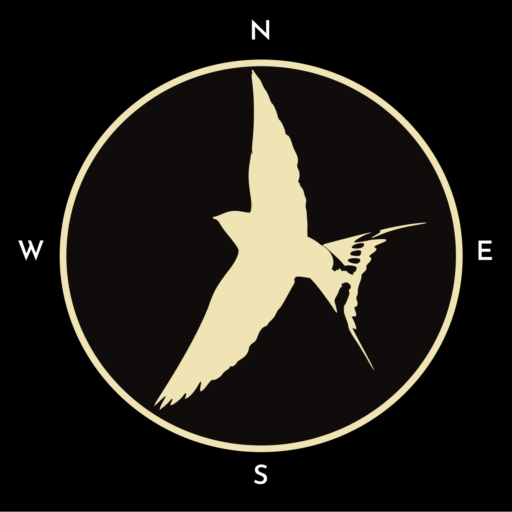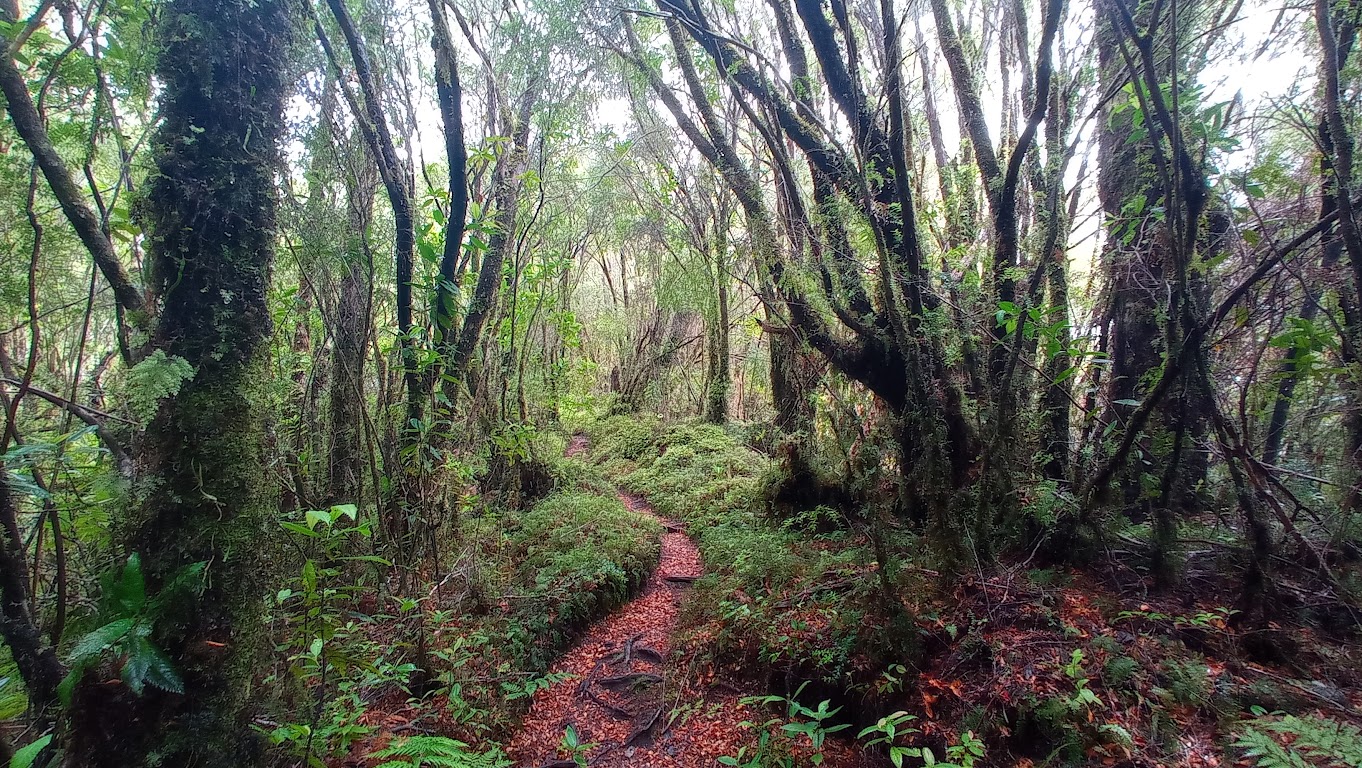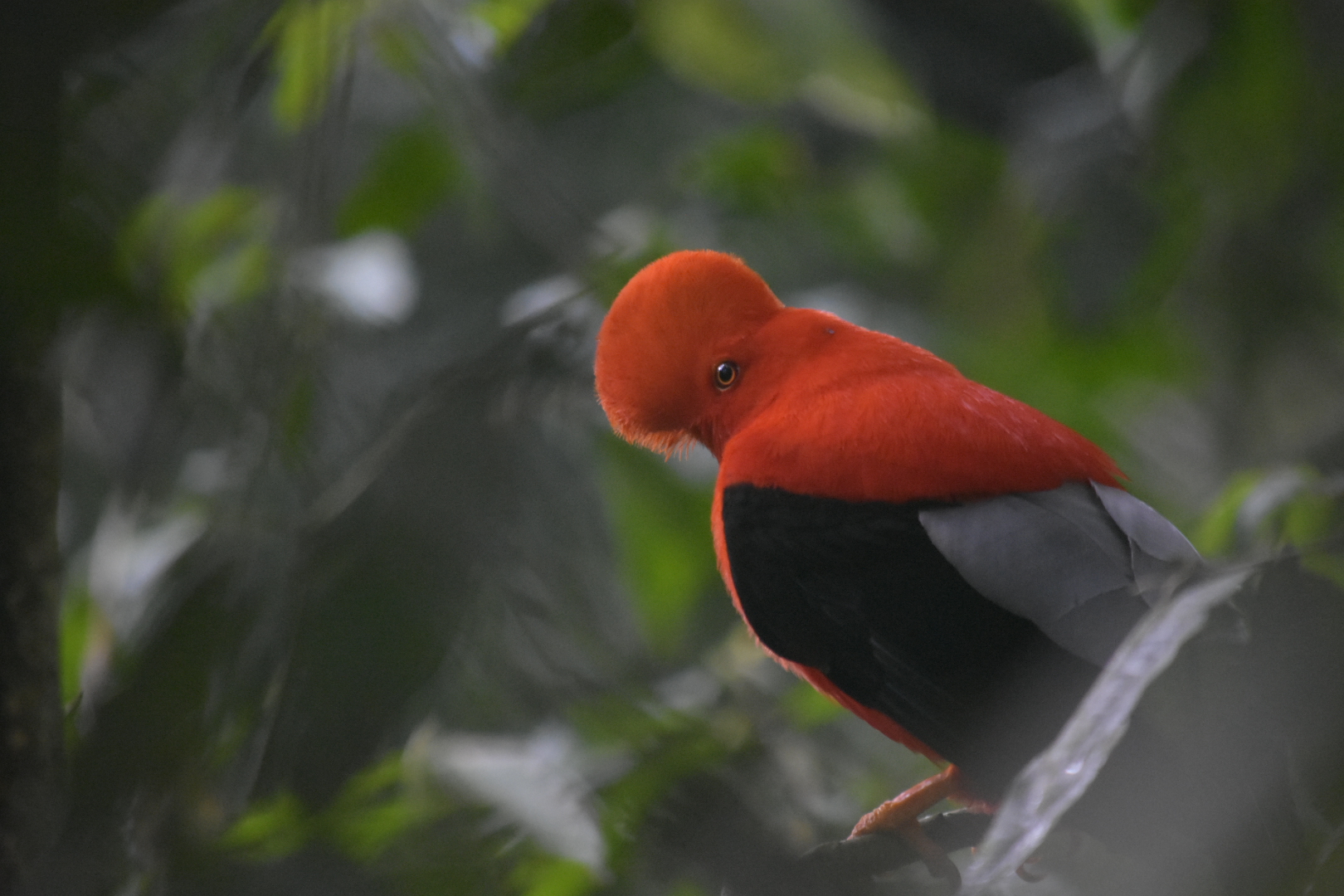How to visit the Colombian Amazon on a Budget & Spot Wildlife
Contents
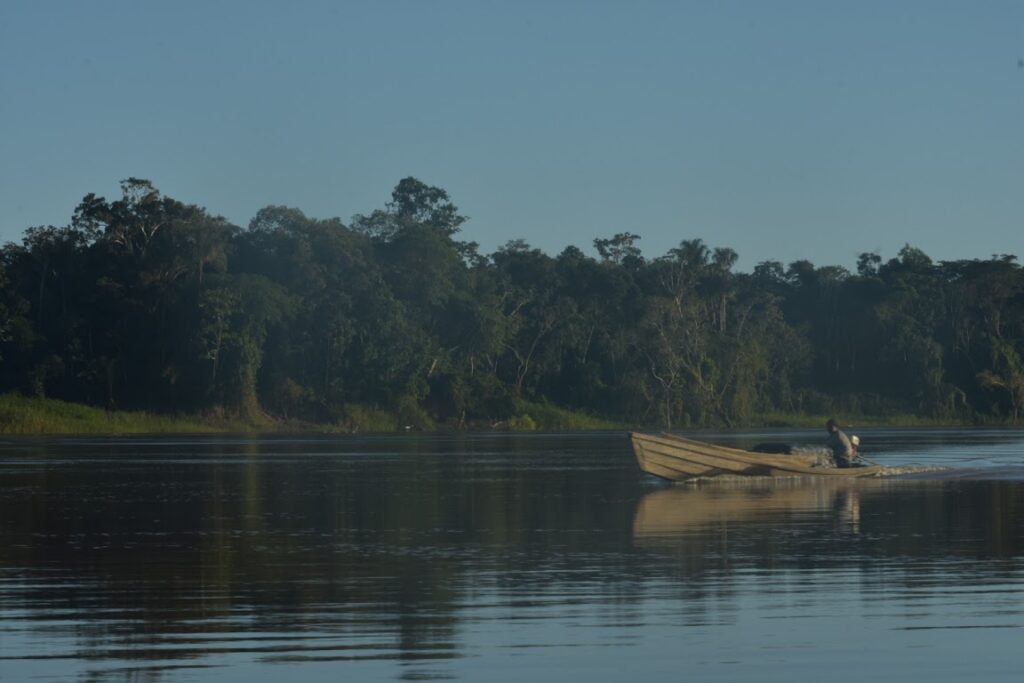

Lush, green, the world’s largest rainforest, the lungs of the earth and the epitome of the word “exotic” – the Amazon Rainforest is a place that scarcely needs an introduction.
In addition to eight other countries, the Amazon covers roughly a third of Colombia in its southeastern corner. It’s a wild corner at that, home to a wealth of wildlife that cements Colombia’s place as one of the most biodiverse countries on earth and a near-absence of roads for the most part. The region’s economy and its culture are both as unique from “mainland” Colombia’s as each other, centred around the river and trade with neighbouring Peru and Brazil.
For nature-loving travellers on a budget, there’s a particularly good reason to come here: Colombia is one of the cheapest places to experience the Amazon Rainforest. Thanks to the country being generally cheap to visit, plus a blossoming tourist industry that caters mainly to national visitors, this article could well have been titled “How to visit the Amazon on a budget”.
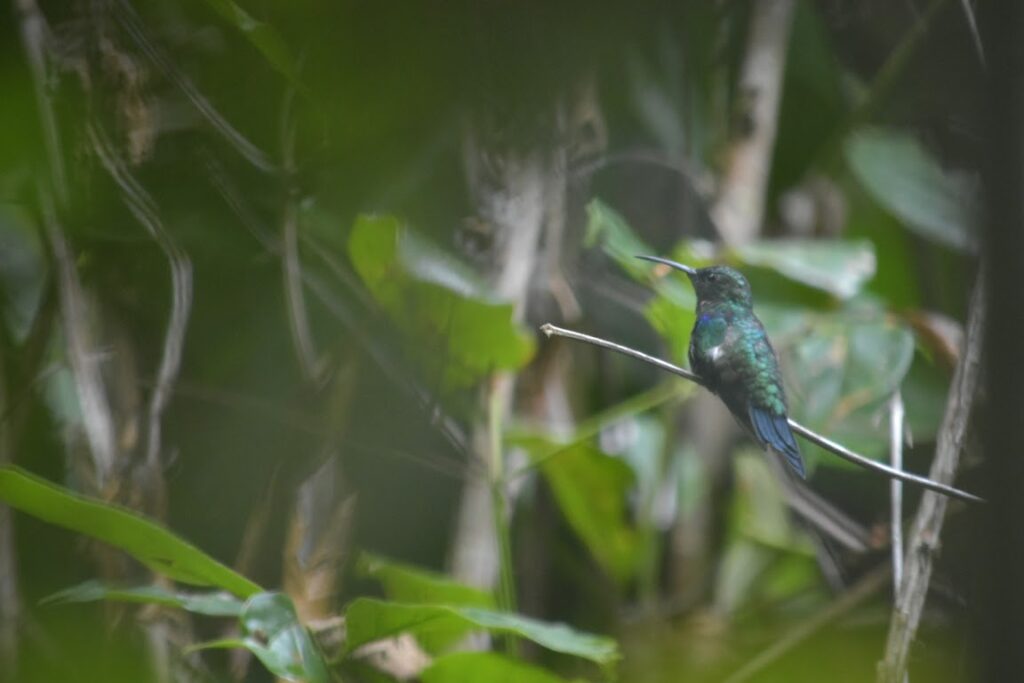

How to get to the Colombian Amazon
Leticia, the capital of the Amazonas region, is the main access point for just about everyone who visits the Colombian Amazon. Located at the southern tip of Colombia, Leticia borders Tabitanga in Brazil and sits across the river from Santa Rosa in Peru.
Daily cheap flights from Bogota make getting here easy, with most flights operated by LATAM. Booking a few weeks to a month in advance is recommended, especially in the high season, but on the whole flights are so frequent and cheap that you can be flexible with your plans. You’ll also need to pay a $35,000 COP fee to exit the airport, a tourist tax they levy with the stated aim of keeping the region’s forests protected.
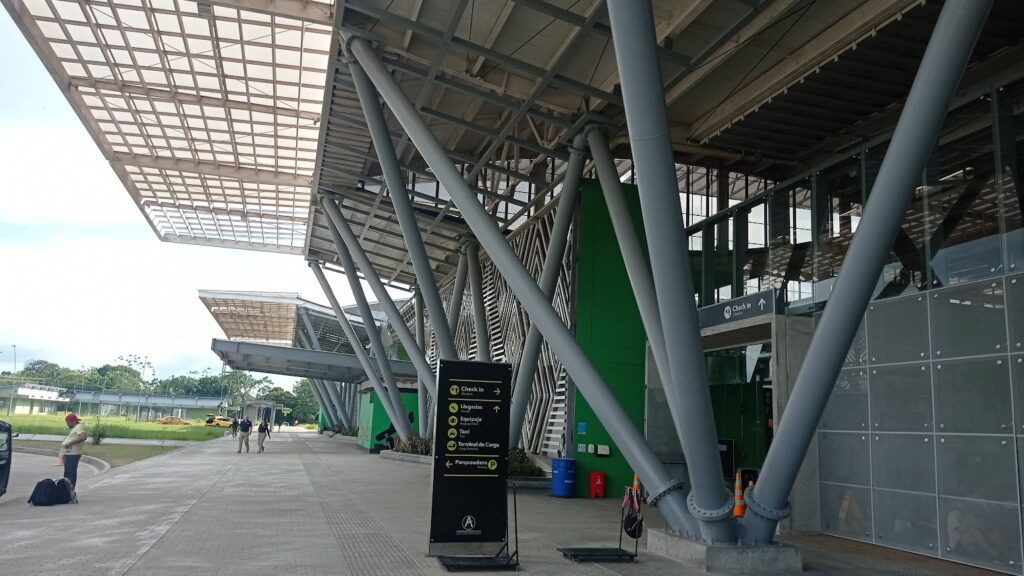

There is also the option to fly to Tabitanga in Brazil, although flights within Brazil can be costly so this option is only really practical if you’re already in the country.
For adventurous overlanders, there are also boats from Iquitos in Peru and Manaus in Brazil. The former can nowadays be done via speedboats, cutting the hitherto three-day journey down to one. Travelling up from Manaus is still a multi-day undertaking, one that involves little more than lounging about on a hammock, watching the rainforest drift by and chatting to your neighbours – if, that is, your Portuguese is up to scratch.
A quick guide to Leticia and the rest of the tri-border area
Originally a Peruvian outpost, Leticia was ceded to Colombia by treaty. Thanks to its position on the Amazon, it became a major settlement in the years that followed. To this day, Leticia has the best infrastructure, safety and (importantly for unfortunate visitors) hospitals in the area.
While nobody will be visiting for a city break any time soon, there’s enough to keep you entertained for the one or two evenings you’ll likely spend before or after an Amazon tour. Here, you’ll find Amazon-themed restaurants, a gym, a riverfront market and a bunch of parks nearby that offer a “mini-Amazon” experience (see the “day trips from Leticia” section).
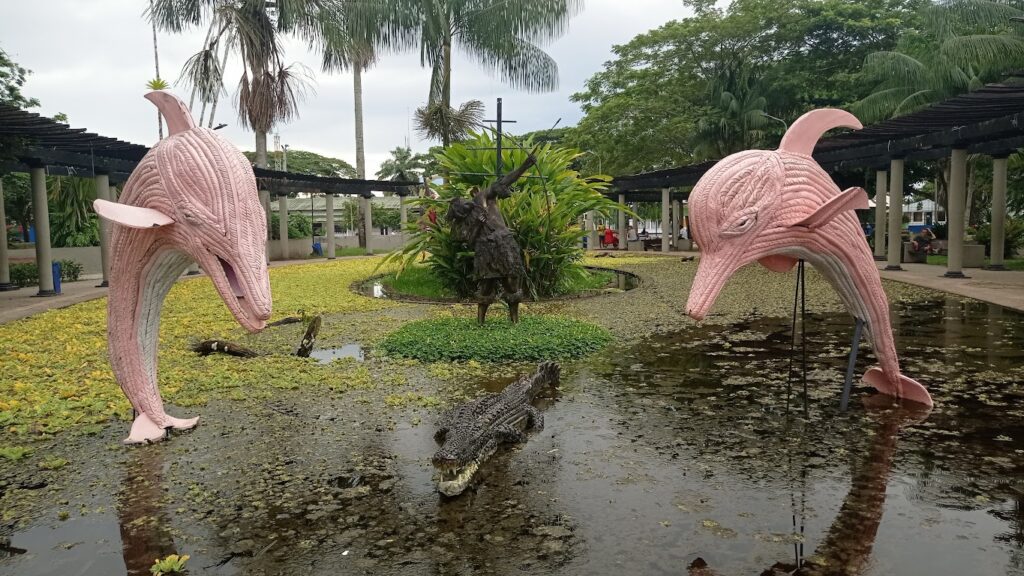

For wildlife lovers, there’s another good reason to spend at least one evening in Leticia: every evening, a thousand white-winged parakeets descend upon Parque Santander to roost. Nothing can quite prepare anyone for the spectacle that is one thousand screeching birds of a feather flocking together, swirling in formation above the crowds of onlookers. For an alternative view of the show, head up the church tower – a donation will be expected. While I was there, a falcon also made an appearance and snapped up an unlucky parakeet.
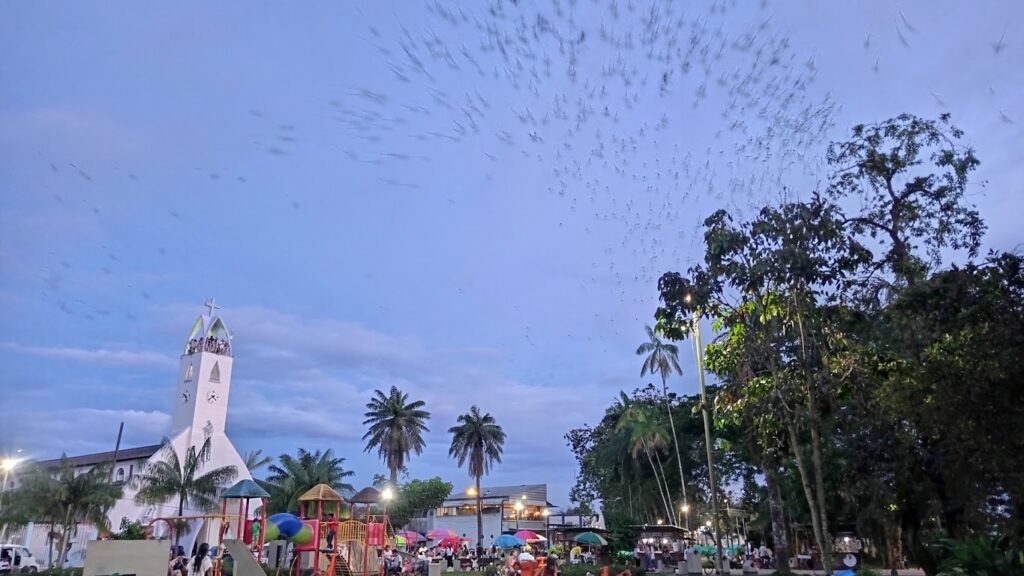

Booking.com and Hostelworld are both worth checking to get the cheapest accommodation in Leticia – personally, I stayed in 3F Hostel, a centrally located homestay where the friendly owner was full of pleasant surprises. From him, I got advice on getting a bus to the nearby attractions when I previously had no idea it existed, a free room upgrade and a drop-off at the airport. On top of that, I had an ensuite and air conditioning in my room. The only drawback was that Wifi and mobile data were both on the slow side, but if what I read after and heard from other travellers is to be believed, it’s like this all over town.
How border crossing between Colombia, Brazil and Peru works
Sitting at the place where three countries meet, the volume of trade between Peru, Colombia and Brazil in this area means that no border controls exist. As a result, travellers can have breakfast in Colombia, ceviche in Peru for lunch and a sunset caipirinha in Brazil all on the same day, without a single extra passport stamp.
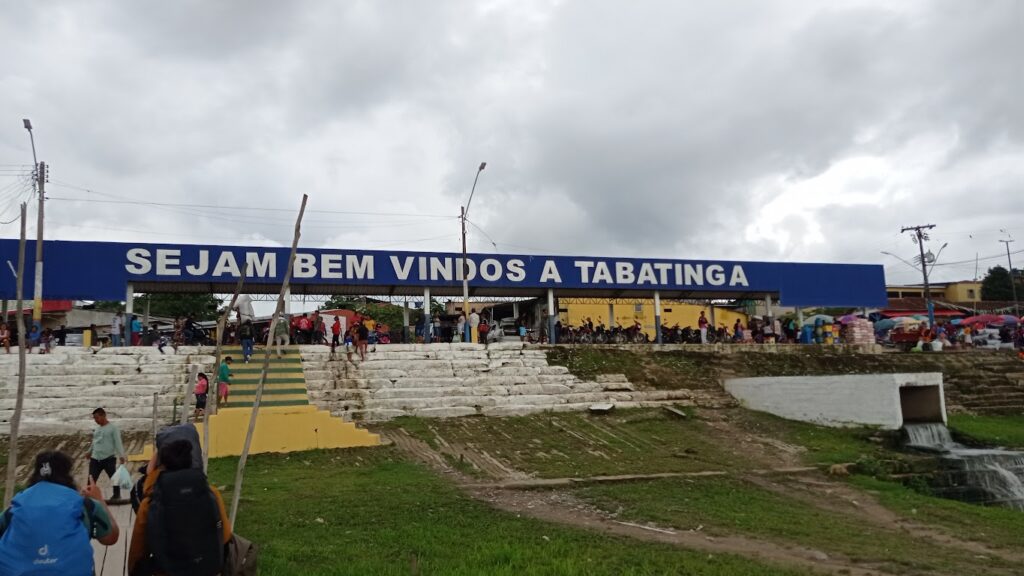

If you’re planning to leave the region, though, make sure you get your exit stamps. In Brazil and Peru this can be done at the immigration offices, and in Leticia this can be done at the airport. Immigration officials check passports at the region’s airports or boats that go deeper into the country. Although Leticia airport has a built-in immigration office that makes the procedure painless if you didn’t already get your Colombian entry stamp, the same cannot be said for the towns’ boat docks.
Furthermore, if you forget to get an exit stamp from any one of the countries, you technically never left and this will almost certainly cause problems if you ever plan to return.
How to visit the Colombian Amazon
Unless you plan on having a half-baked Amazon experience, you’ll need to book a tour at some point. There are four options for accessing the rainforest: booking with Palmari Lodge (which I’d recommend), booking a multi-day tour in advance from a lodge or operator, visiting one of Leticia’s numerous tour agencies and booking them from there, or going upriver to the small town of Puerto Narino and booking tours from there.
Booking Amazon tours in advance
Booking tours in advance is much easier nowadays thanks to every agency having Whatsapp at the least and every tour operator having a website. One of the better ways to find a reputable operator is to use Google Maps (here’s one I searched for for you). From my research, Amazonas Jungle Tours and Amazon Jungle Trips offer the widest selection and the best value for money, though as I never took either tour I can’t personally comment on this. Nonetheless, their reviews on Google are solid.
Generally speaking, you’ll meet up in the morning on the first day of the tour, necessitating an overnight stay in Leticia beforehand.
Booking day trips to the Amazon from Leticia
In Leticia, there are various agencies that can organise various short activities and day trips into the surrounding Amazon – check Google Maps, or ask your hostel for recommendations. Chances are, they’ll be able to book it for you too. It won’t feel as wilderness-ey, but you’ll still be able to do most of the Amazon’s activities and (if the truth be told) the rainforest doesn’t look that much different whether it’s 10 or 50 kilometres outside of Leticia.
There are a few attractions in and around Leticia that can be visited independently too: the Museum of Ethnography is the easiest one to visit, sitting right at Leticia’s heart, and a must-do for anyone interested in the area’s indigenous tribes. The road leading northwards from Leticia is lined by attractions such as Mundo Amazonico and Reserve Tanimboca, which among them offer activities such as trekking, blow dart shooting and ziplining. Public buses ply the road every twenty minutes and go all the way up to kilometre 22 – for the record, Mundo Amazonico lies at kilometre 11.
Boating to Puerto Narino and booking trips from there
Puerto Narino is a small town located upriver from Leticia (still in Colombia, though), and is well-known for having a heavy emphasis on sustainability. Like Leticia, there are many agencies in town that can organise trips out to the rainforest, and most hostels and guesthouses can assist with booking these too. Lago Tarapota is the area’s main calling card, a lake full of giant water lilies and river dolphins. If you’re incredibly lucky, you may even spot one of the area’s small population of Amazonian manatees.
Palmari Lodge (recommended option)
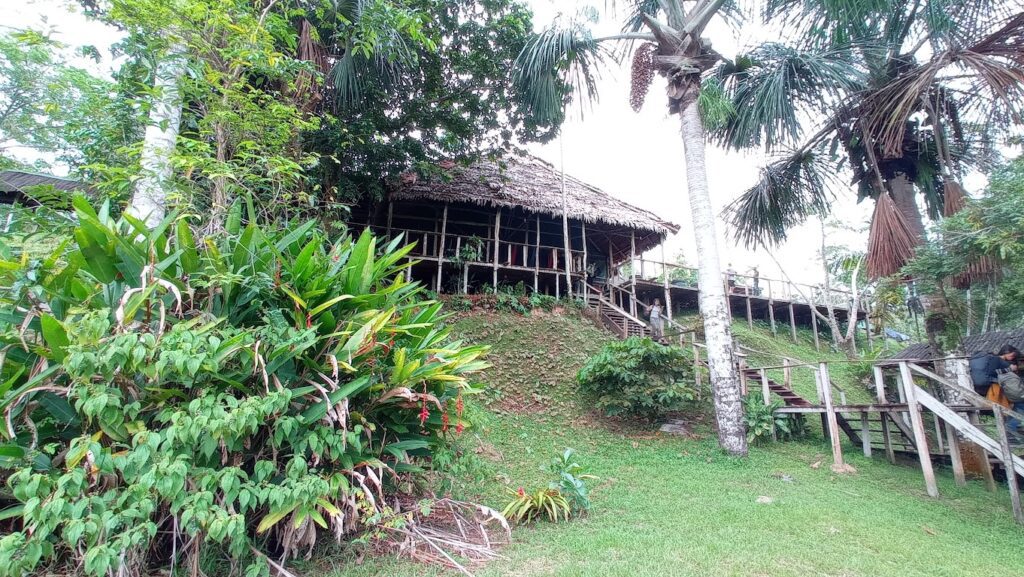

Personally, I booked directly with Palmari, a jungle lodge on the Brazilian side of one of the Amazon’s tributaries. And I will, hand on heart, say that you probably won’t find a better value deal elsewhere in the area. Prices are a little higher than what many of Leticia’s operators offer, starting at 80 EUR per day for a hammock. Additionally, the boat transfer to and from Leticia is not included, which will cost anywhere from EUR 66 to 170 depending on how many people happen to be travelling on your days (they work to ensure that as many people as possible travel together). That and any tips for your guides, though, are the only two things that aren’t included: everything else, including alcoholic drinks, is.
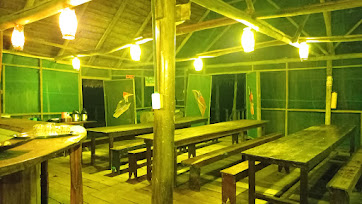

Additionally, you’ll get your own private guide, giving you complete flexibility over which of Palmari’s activities you’d like to do on which day. All the quintessential Amazon activities – piranha fishing, caiman night safaris, dolphin spotting, etc – are on offer here, and birdwatchers will be particularly excited to find out that nearby is a harpy eagle’s nest.
What activities are on offer?
Archery and blow dart-shooting: using traditional weapons, this one will have you practising your marksmanship with a coconut as a target. Hunting was how the area’s early inhabitants survived in the Amazon, and just an hour of using their weapons will give you quite the appreciation for the level of skill required to hunt animals in the forest. Especially since even spotting wildlife in the Amazon is a bit of a tall order. Speaking of which…
Wildlife spotting: there’s more in the next section on the Colombian Amazon’s wildlife, but a general point has to be said: on the whole, your wildlife sightings are going to be brief and infrequent. Dismiss any preconceived notions of floating down the river with monkeys and sloths looking down at you while macaws shriek from the trees and a jaguar roars in the distance. I can count on one hand the number of times I saw monkeys that allowed me even a half-decent view, and the number of times a dolphin surfaced more than once. Nonetheless, the Amazon is a must-visit for wildlife lovers, since there’s so much here you simply won’t find elsewhere.
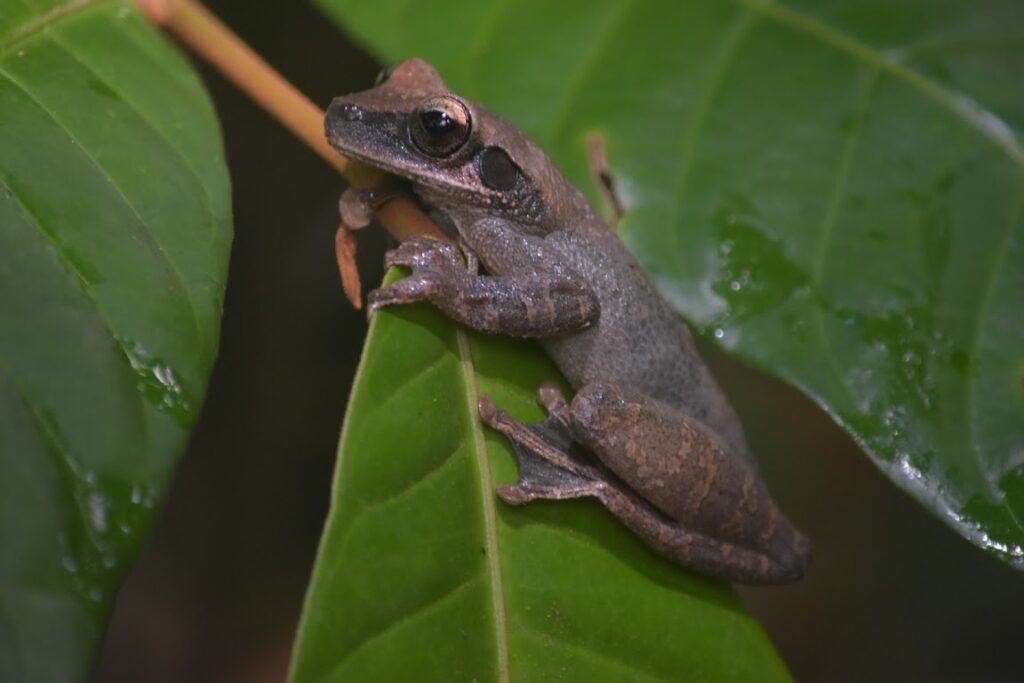

Kayaking: the best option if you want to drift down the river without the hum of a boat’s engine in your ear, many lodges and operators offer the opportunity to go kayaking down the Amazon. Forgive me for stating the obvious, but bring plenty of water – paddling in the humidity of the tropics is a different kettle of fish to your local pond.
Fishing: catching piranhas is one of the Amazon’s most popular activities, whether because of the fact that you’ll get a delicious fried piranha afterwards if you’re successful (if you’re offered lime with it, take it) or because of the piranha’s vicious reputation. You’ll be taken to a reliable spot by boat, though whether or not you’ll catch anything seems to be luck of the draw.
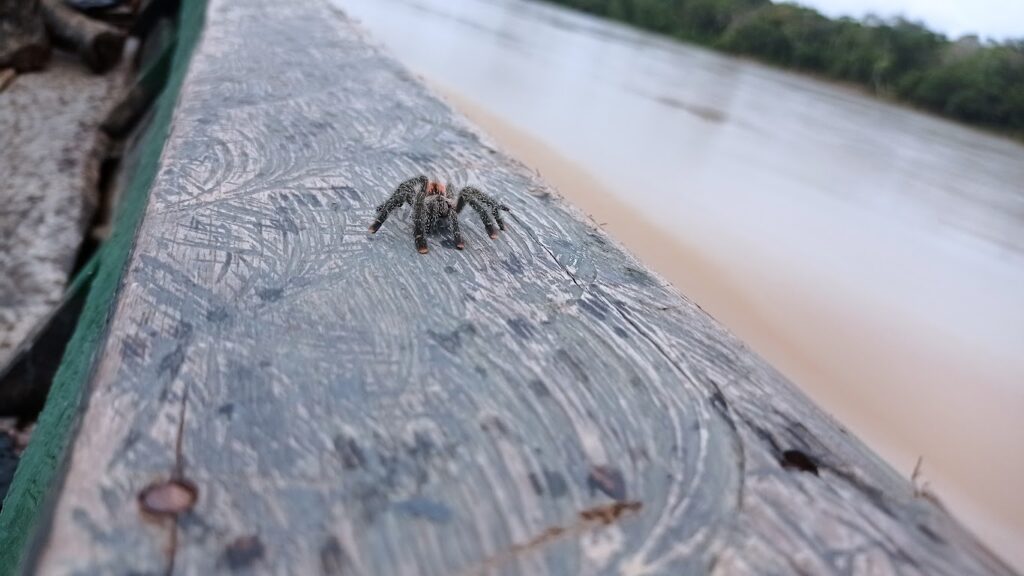

Jungle camping: hiking out into the forest with your guide, stringing up a mosquito net and hammock and falling asleep to the chorus of crickets and other night-time animals is an experience like no other. Be warned: you should bring earplugs for this, since that chorus can often turn into a racket, and the close proximity of the forest makes it even louder.
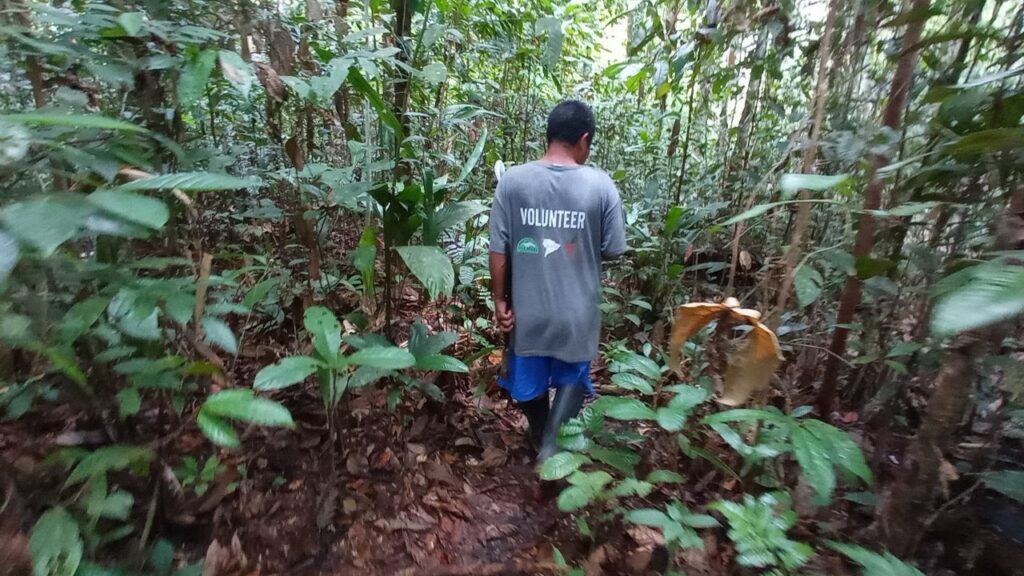

Canopying/ ziplining: a few places around Leticia and in the forest offer the opportunity to get up into the treetops. Strapped safely into a harness, you’ll get a monkey’s-eye-view of the Amazon, then zip through the trees like a bird – the forest will certainly look very different from up there.
Relaxing in a hammock – this one is more for when you’ve got some downtime, but going to the Amazon need not be active every waking hour. Sometimes there’s something to be said for just lounging about and/or swinging gently to the sound of the river, the sight of the forest and the cooling feeling of the occasional breeze.
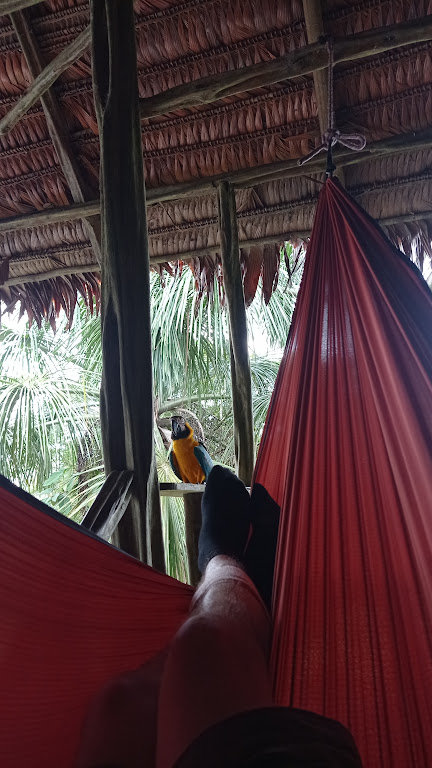

Wildlife in the Colombian Amazon
River dolphins – dolphins tend to be on every visitor’s wish-list after recovering from the surprise that there are dolphins this far inland. There are two types of dolphin in the Amazon: the tucuxi, a small, grey species that looks like what you’d expect from a dolphin, and the larger boto whose skin ranges from light grey with pale patches to the brightest shade of pink. Neither one surfaces for much time, making photography tricky. My guide would often point them out, and I would spin my head around, only to see the tip of the fin disappearing into the water.
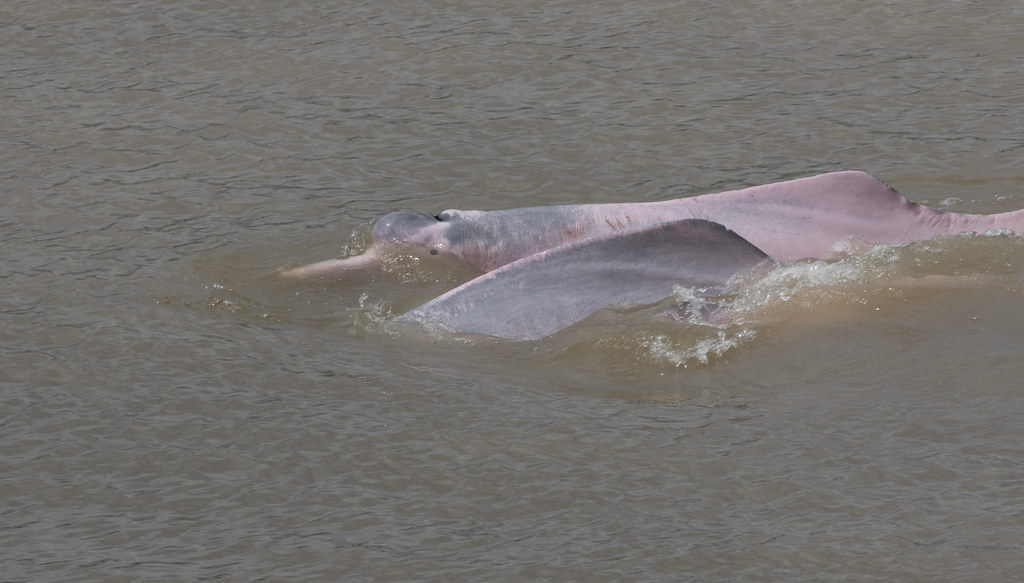

Harpy eagle – for all the majesty of Europe and North America’s eagles, none stand up to that of the harpy eagle. Despite subsisting on a diet of sloths and monkeys, this eagle is the largest in the world, its body’s size matching that of a human’s. Add to that a crest of feathers trailing off the back of its head and a facial expression that can only be described as furious, and it’s not hard to see why this is one of the most coveted species for birdwatchers all over the world. A pair nests near Palmari Lodge, and trekking here is one of the activities on offer. I got incredibly lucky and also saw one at Mundo Amazonico.
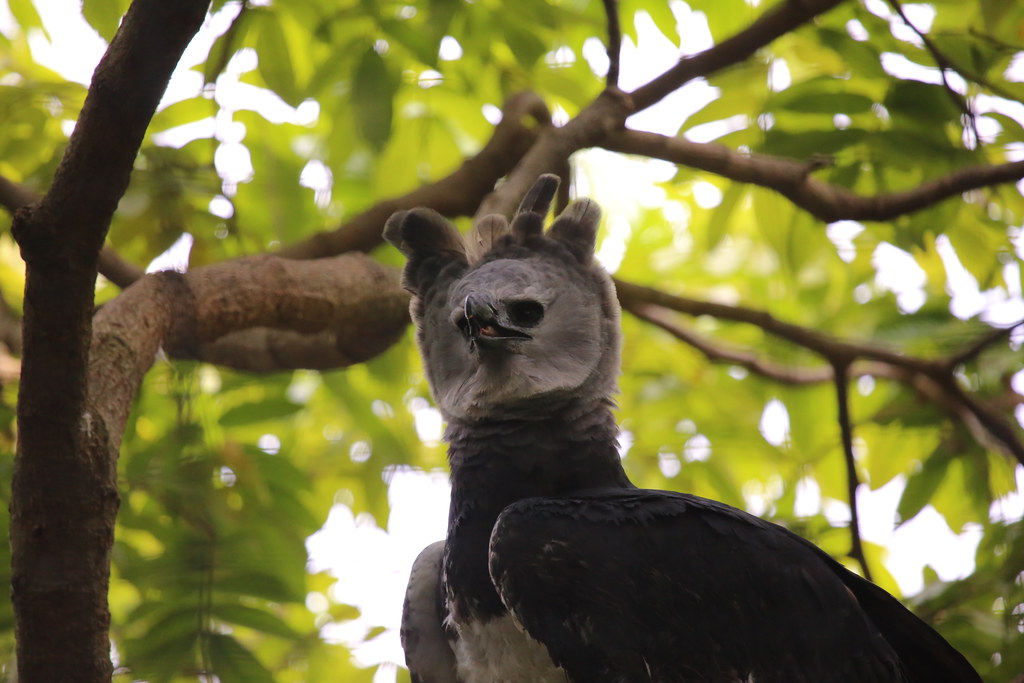

Monkeys – there are various monkey species in the Amazon, and the ones you’re most likely to see here are squirrel monkeys. Keep your eyes and ears out for branches rustling as they move through the trees. Others you might spot include moustached tamarins and pygmy marmosets, the world’s smallest monkey.
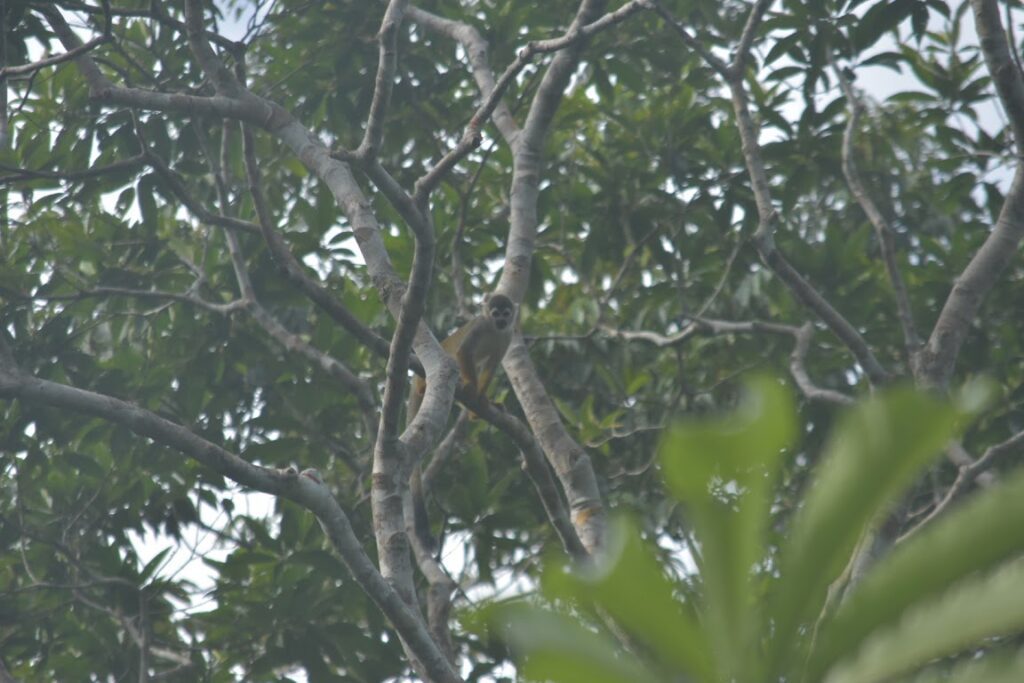

Nocturnal animals – usually you’ll get some kind of night safari while on a tour, and they’re also on offer at Palmari. This will either be by boat, in search of caiman, or on foot, in which you could come across a variety of creatures: the infamous poison dart frogs, nightjars sitting on the ground and pacas, guinea pig-like rodents with stripes along their bodies, are just a few of them.
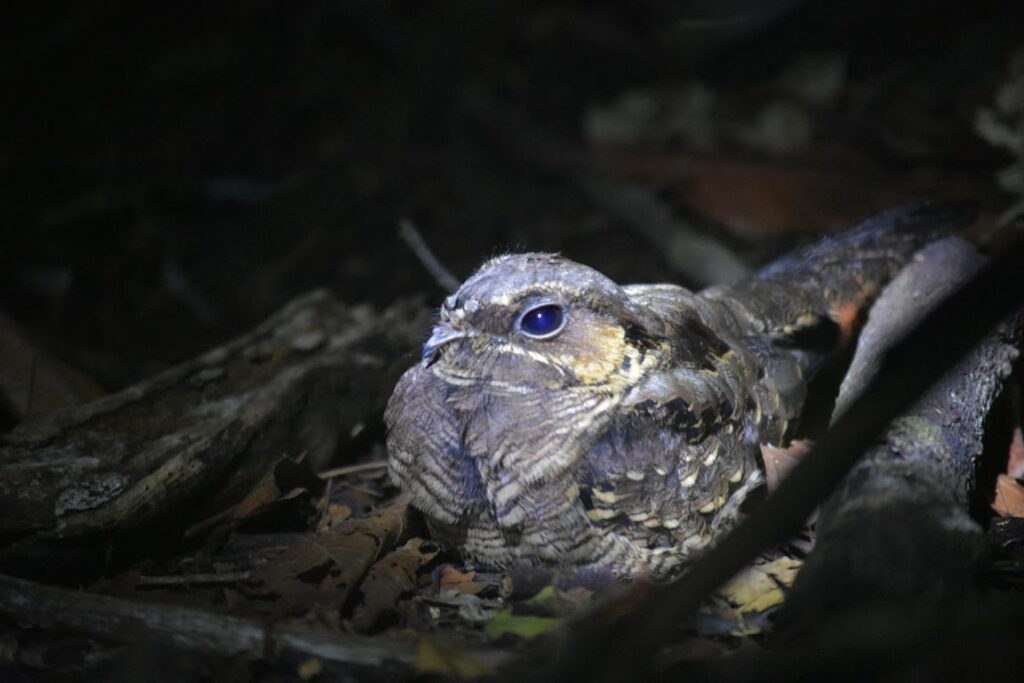

How much does it cost to visit the Colombian Amazon?
- Return flights will generally go for around USD $70-90, with an item of cabin baggage an extra $20.
- How much an Amazon tour costs will depend a lot on how many days (if at all) you do, plus how many people join. You should expect to pay at least COP$900,000 for a three-day, two-night tour, if there are at least six people.
- Palmari Lodge’s current rates can be found on their website, but at the time of writing EUR 80 per day was the going rate for a hammock with everything included. Transfers are an extra EUR 66 to 170 depending on how many people travel on the same day as you.
- Leticia accommodation tends to be very cheap, with dorms going for $5 and private rooms for $10.
- Food in Leticia is a bit more expensive than the rest of Colombia, though it’s often worth spending a bit more to try some of the food typical of the Amazon region. Plates in restaurants should be around $25,000 for something traditional. For those on a tight budget, there are many chicken-and-rice places that will do you a plate for $17,000.


Photo credits
“Harpy Eagle” by cuatrok77 is licensed under CC BY-SA 2.0.
“Amazon River Dolphin/Pink River Dolphin (Inia geoffrensis)” by Gregory ‘Slobirdr’ Smith is licensed under CC BY-SA 2.0.

